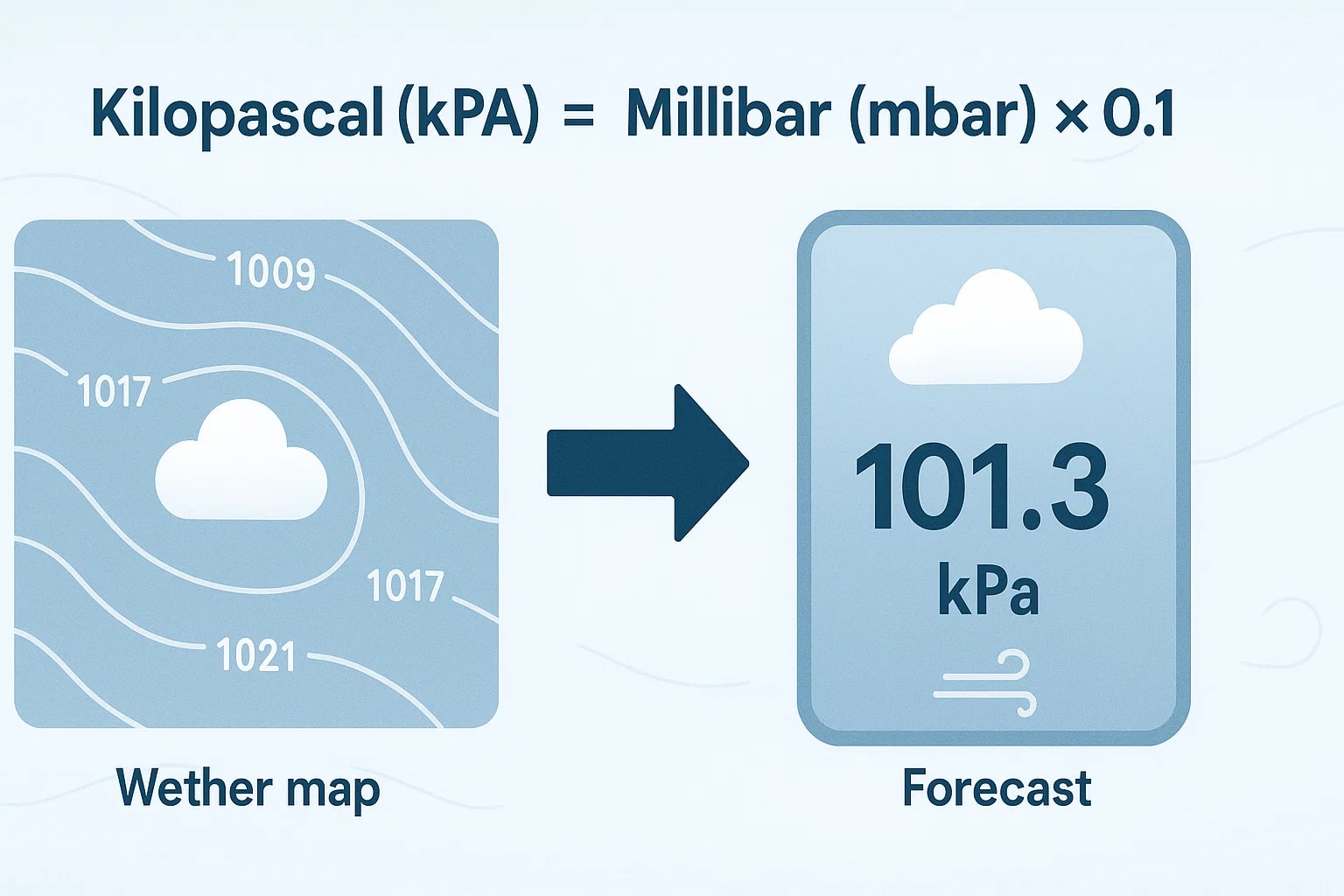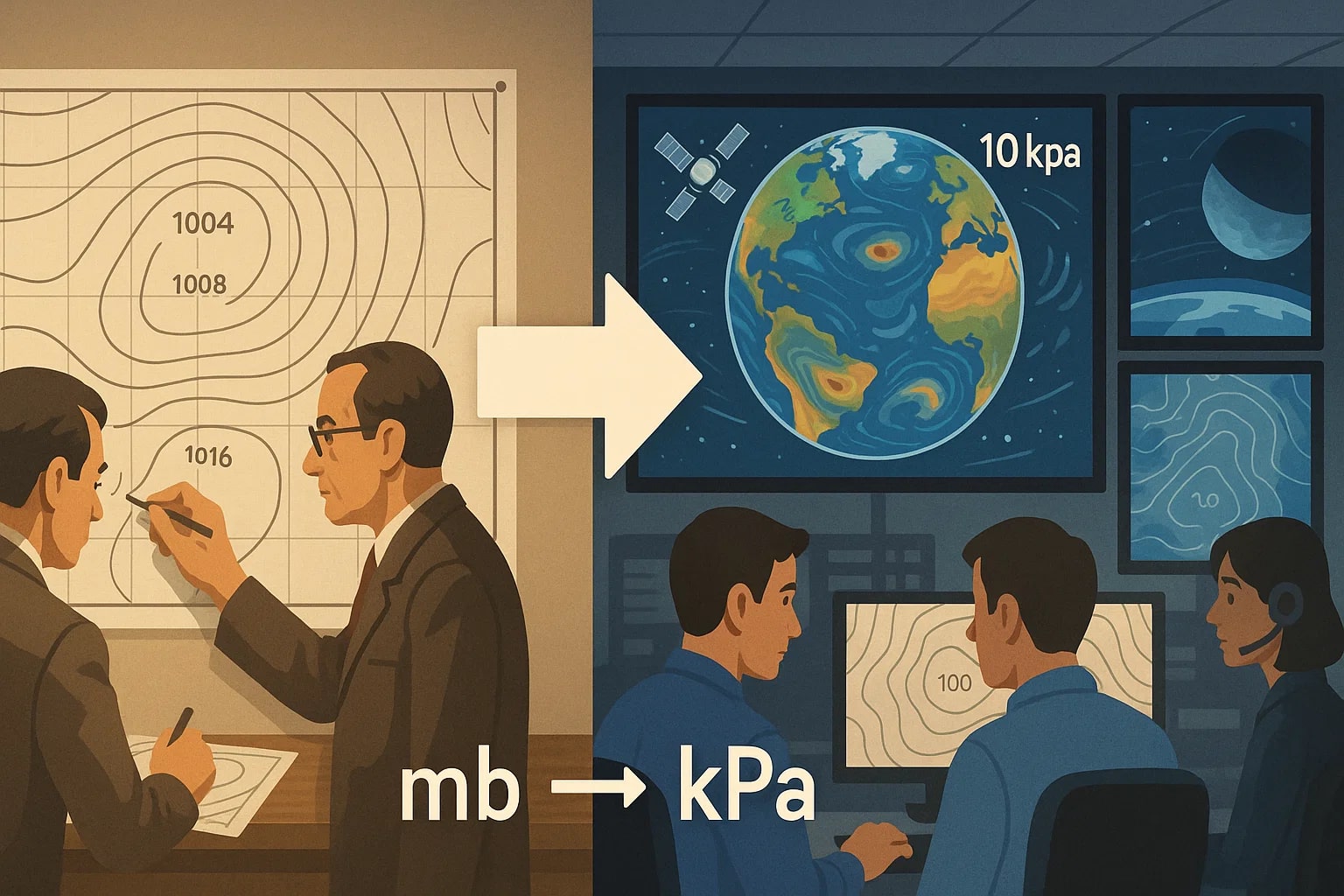millibar to kilopascal – How to convert mbar to kPa
The millibar (mbar) is a common unit in meteorology, while the kilopascal (kPa) is widely used in science, engineering, and daily life. Converting millibar to kilopascal bridges weather forecasts with modern SI units, making it easier to communicate pressure data consistently across fields.

What is a millibar (mbar)?
A millibar equals 100 pascals. It has long been the standard in meteorology for expressing atmospheric pressure. Sea-level standard pressure is about 1013 mbar.
What is a kilopascal (kPa)?
A kilopascal equals 1000 pascals. It’s the SI-derived unit used in weather reports, blood pressure readings, and engineering fields. For example, normal atmospheric pressure is about 101.3 kPa.
How to convert millibar to kilopascal
Kilopascal (kPa) = Millibar (mbar) × 0.1
Example:
Kilopascal = 980 mbar × 0.1 = 98 kPa
For quick and accurate conversions, you can try the Conversion Tools. Other handy options like the Speed Converter are also available.
Do you know?
-
About millibar: Meteorologists often talk about “low pressure systems” in millibars. A strong storm might bring central pressures as low as 950 mbar.
-
About kilopascal: Blood pressure in medicine is usually measured in millimeters of mercury (mmHg), but it can also be expressed in kPa. A normal systolic pressure of 120 mmHg equals about 16 kPa.
How Forecasting Became Standardized
For decades, meteorologists across the world used millibars to describe pressure. But as the SI system spread, kilopascal became the preferred unit in many countries, including Canada and Australia. During the transition, weather services had to report in both mbar and kPa so the public could adapt.
This dual reporting helped standardize data across international forecasting networks. Today, while older meteorologists may still use millibars out of habit, younger professionals and global data systems rely heavily on kilopascals. The smooth shift shows the importance of conversions in making science universally understandable.

Consistency Across Systems
Converting millibar to kilopascal is simple: multiply by 0.1. But its impact is bigger than the numbers suggest. This conversion unifies older meteorological practices with the SI system, ensuring that weather data, scientific research, and even medical information speak the same language. From storm warnings to hospital rooms, precision in pressure keeps us safe.

